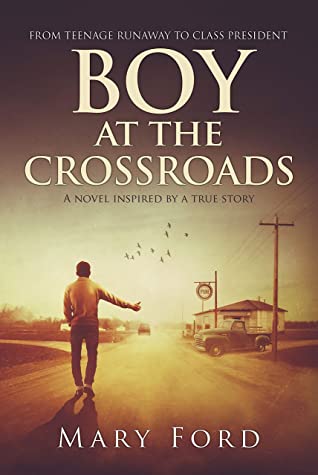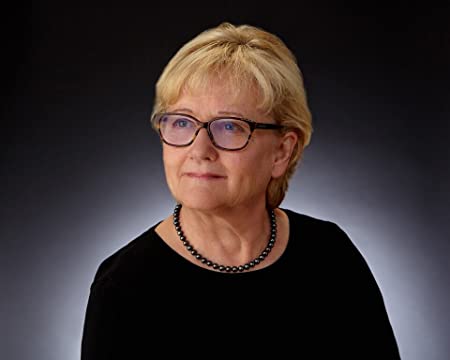 Wife Pens the Fascinating True Story of Her Husband’s Childhood
Wife Pens the Fascinating True Story of Her Husband’s Childhood
SCITUATE, MA – Mary Ford’s debut novel follows a young boy’s journey from jailbird, to teen runaway, to the place he truly belongs, and is based on the true story of her husband’s childhood. “Boy at the Crossroads: From Teenage Runaway to Class President” (Indie Publishing, Feb. 2021) is layered with nostalgia, and will hit home for fans of The Outsiders and Where the Crawdads Sing.
“It’s hard to explain how our Dad still had control over us. David and I were as big as grown men. But Dad had a way of making us feel small.”
Tennessee, 1955. Conley Ford learned quickly the world’s full of hard knocks. Seeking the wrong kind of excitement, the restless thirteen-year-old falls in with a group of older boys joyriding in stolen Mercury cars…until he is arrested and put on probation. With a harsh father waiting and too embarrassed to face his classmates as a jailbird, the impetuous youth leaves town, making it all the way to New Orleans.
Conley uses his wits and street smarts to commandeer a hot dog cart and make some cash. But when a turf war and a near-fatal accident sends him back home, the resourceful teen faces a choice between staying in misery or once more striking out into a dangerous world. Mary Ford depicts an adolescent who grew up impoverished and with minimal affection, but still found the strength to follow his gut toward something more.
“Boy at the Crossroads”
Mary Ford | February 2021 | Mary Ford
Young Adult | Coming of Age | Historical Fiction
Hardcover | 978-1736316412 | $21.05
Paperback | 978-1736316412 | $13.51
Praise for “The Boy at the Crossroads”
“Rip-roaring escapades and nostalgic musings in an American coming-of-age adventure.” – Booklife review
“Boy at the Crossroads,” written and listed as fiction, was very factual to me being a classmate of Conley at Halls High School in the late 50’s and early 60’s. When his family moved to the Halls community from Happy Holler in Knoxville, none of the students were aware of his family dynamics. I knew Conley was a survivor, and now I know why. Anyone who grew up during this time period will be reminded of the blunders of their youth. I wish every adolescent would read “Boy at the Crossroads.: There are lessons to be learned from Conley Ford.” – David Wayland
“For any youngster who has made some bad choices leading to a life of crime or destruction, Conley’s story could possibly be life-changing.” – Amazon Review
“Coming of age books, especially those that are true, are probably my favorite genre and this one is terrific. It is a well-written story that will appeal to readers of all ages. I found “Boy at the Crossroads” inspiring. The fast-moving pace takes us from the restlessness of a boy born in the early 1940s in eastern Tennessee to a young man in his early twenties. This book demonstrates the value of a strong work ethic better than anything else I have ever read (and I’ve read a lot). It is not an easy book to put down so get comfortable and enjoy. The journey is well worth the read.” – Zelly
 MARY FORD is an award-winning journalist who spent twenty-eight years as the editor of two small-town community newspapers in Massachusetts: the Cohasset Mariner and the Hingham Journal. She met her future husband, Conley, in 1971 in California where she was teaching English and has always been fascinated by his story. Conley and Mary were married in Los Angeles and were featured on the Newlywed Game with Bob Eubanks. After their first appearance, the popular couple was asked back for the Alumni Game. They came in last both times. Their incompatibility has lasted for nearly fifty years. With Conley’s job transfers, the couple lived in California, Japan, France, Missouri, Minnesota, England, Illinois, and Massachusetts. They reside in Scituate, Mass., with their dog, George. “Boy at the Crossroads” is Mary’s first novel.
MARY FORD is an award-winning journalist who spent twenty-eight years as the editor of two small-town community newspapers in Massachusetts: the Cohasset Mariner and the Hingham Journal. She met her future husband, Conley, in 1971 in California where she was teaching English and has always been fascinated by his story. Conley and Mary were married in Los Angeles and were featured on the Newlywed Game with Bob Eubanks. After their first appearance, the popular couple was asked back for the Alumni Game. They came in last both times. Their incompatibility has lasted for nearly fifty years. With Conley’s job transfers, the couple lived in California, Japan, France, Missouri, Minnesota, England, Illinois, and Massachusetts. They reside in Scituate, Mass., with their dog, George. “Boy at the Crossroads” is Mary’s first novel.
Follow Mary on social media:
Facebook: @mary.t.ford LinkedIn: @maryfordedit
https://maryfordedit.com/
In an interview, Mary Ford can discuss:
- How much of her book is nonfiction
- How she collected and used years’ worth of memories on tapes as research
- Her husband’s resilience and how he fought his way to a better life
- Father-son relationships and how they affect childhood memories
- How she and her husband have maintained their marriage for nearly fifty years
- Why she decided to write a coming-of-age story about her husband’s youth
- The experience of writing a fictionalized story based on true events about a family member.
- The challenging transition from journalist to author
- Why this is an important story for teens who may have made bad decisions
- Why especially young adults and folks in their 60s, 70s, and 80s love the book
An Interview with Mary Ford
How did your career as a journalist prepare you to write this novel?
After 35 years in journalism with the requisite deadlines, I had the discipline to accomplish the task of writing. My particular “gift” as a reporter/editor was “news judgment.” In other words, I can recognize what a good story is. My husband’s story about running away at thirteen and being part of a humungous family fascinated me. I wanted to write his story one day. When I retired from my newspaper career, I had the time to focus. I have also mastered the short, declarative sentence!
How much research did you do to tell your husband’s story? What was it like listening through old tapes?
Over the years on our trips to Knoxville, Conley and I would walk the old neighborhood and he would share his recollections. On many trips, I didn’t accompany him due to my work schedule. I had him bring a mini-cassette recorder and talk into it while he was driving from Massachusetts to East Tennessee. Transcribing the tapes was a form of pure drudgery but I did it! I didn’t want to miss any of the colloquialisms and unique memories. The next task was to craft all the information into a coherent story with a beginning, middle, and end. A lot of great stuff was left on the cutting-room floor because it did not move the story forward. Too many vignettes can kill a good story.
How do you think the experience of writing a book is different when you are writing the story of someone you love?
Actually, my relationship with Conley had little influence on my decision or my writing. The gift that I was presented with was a great story. One of my instructors at Grub Street Boston remarked that we should all be so lucky. I did not have to invent a plot or make the whole thing up. My biggest challenge was leaving the newswoman behind. My early drafts read more like newspaper reports than a novel.
When and how did you decide you were going to write a novel from this true story?
Like millions of others, I always wanted to write a novel. Conley’s story gave me the perfect opportunity once I had the time. Throughout the process, he has been completely supportive. He loves the book and is really happy to share his story about a bygone era. Even though times have changed, the universal father-son conflict is a theme that is relevant today.
What was the hardest part about telling such a personal story?
By far the most difficult part was getting Conley to open up about how he felt. Was he scared? What was it like not to shower or have a change of clothes, etc.? He was great on details and his memory is amazing but getting into the head of what was a thirteen-year-old boy was a real challenge since the book’s point of view is his alone.
What are some of the main differences between your husband’s true story, and the novel you wrote?
I actually thought I was writing a memoir. One of my instructors at Grub Street (a creative writing center in Boston) set me straight and told me I was writing a novel. Once I realized that, it freed my writing up. Most of the dialog is invented and some scenes are enhanced somewhat. But the details of the story, including the chronology is all true.

A former award-winning journalist with national exposure, Marissa now oversees the day-to-day operation of the Books Forward author branding and book marketing firm, along with our indie publishing support sister company Books Fluent.
Born and bred in Louisiana, currently living in New Orleans, she has lived and developed a strong base for our company and authors in Chicago and Nashville. Her journalism work has appeared in USA Today, National Geographic and other major publications. She is now interviewed by media on best practices for book marketing.

